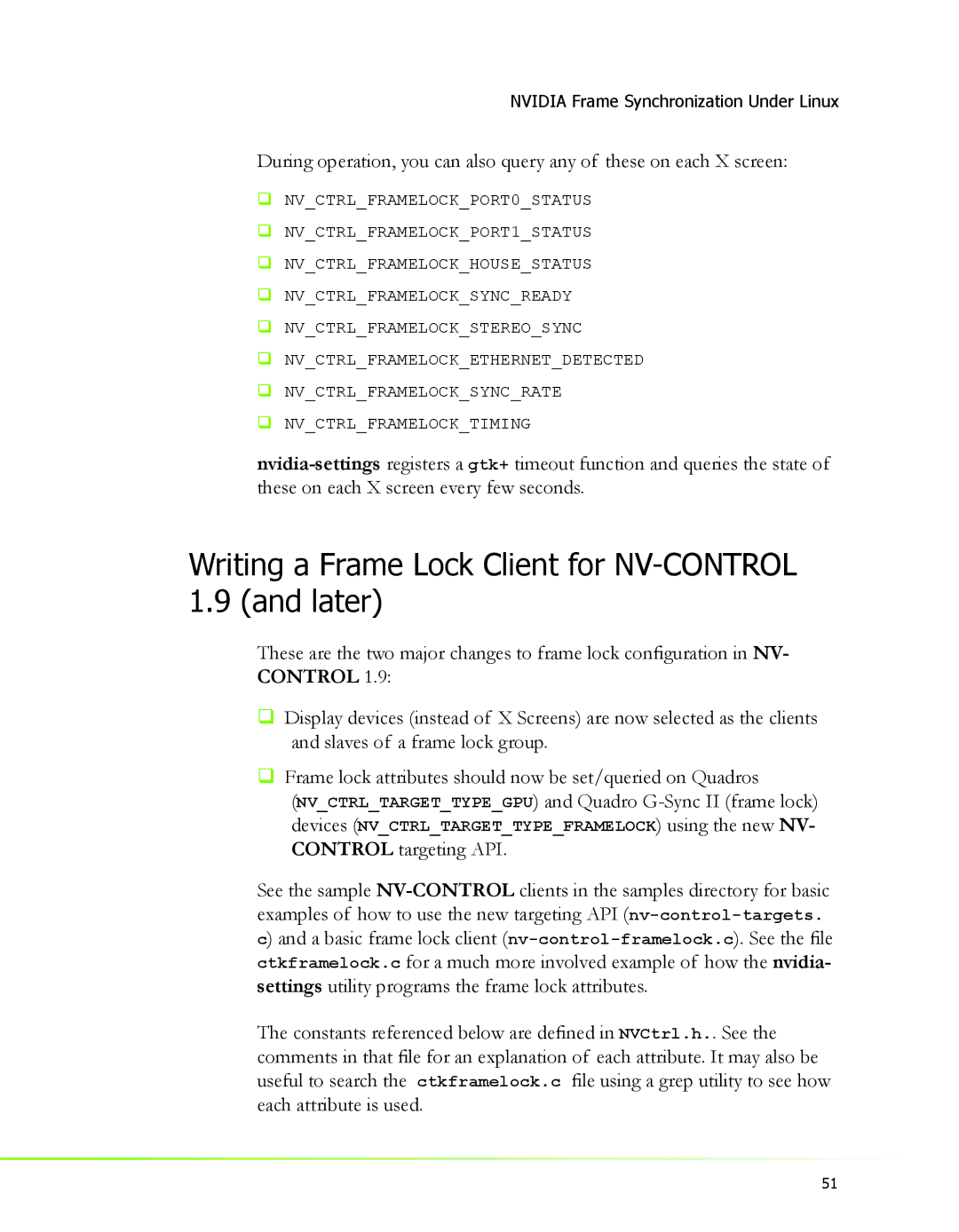NVIDIA Frame Synchronization Under Linux
During operation, you can also query any of these on each X screen:
NV_CTRL_FRAMELOCK_PORT0_STATUS
NV_CTRL_FRAMELOCK_PORT1_STATUS
NV_CTRL_FRAMELOCK_HOUSE_STATUS
NV_CTRL_FRAMELOCK_SYNC_READY
NV_CTRL_FRAMELOCK_STEREO_SYNC
NV_CTRL_FRAMELOCK_ETHERNET_DETECTED
NV_CTRL_FRAMELOCK_SYNC_RATE
NV_CTRL_FRAMELOCK_TIMING
Writing a Frame Lock Client for NV-CONTROL 1.9 (and later)
These are the two major changes to frame lock configuration in NV- CONTROL 1.9:
Display devices (instead of X Screens) are now selected as the clients and slaves of a frame lock group.
Frame lock attributes should now be set/queried on Quadros
(NV_CTRL_TARGET_TYPE_GPU) and Quadro
See the sample
The constants referenced below are defined in NVCtrl.h.. See the comments in that file for an explanation of each attribute. It may also be useful to search the ctkframelock.c file using a grep utility to see how each attribute is used.
51
